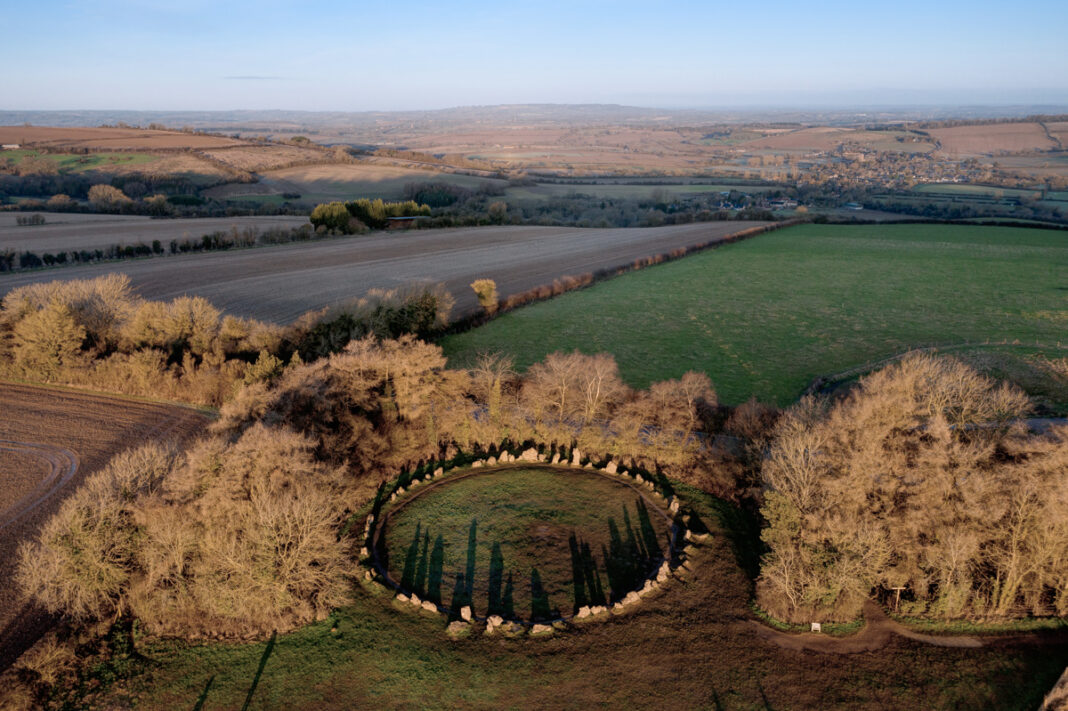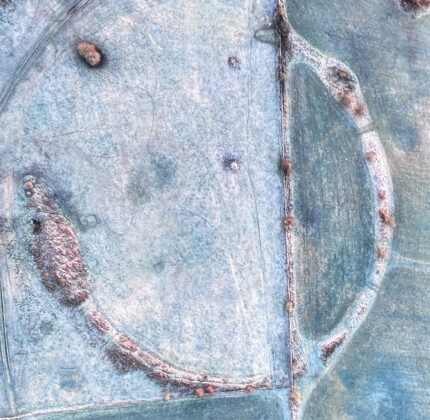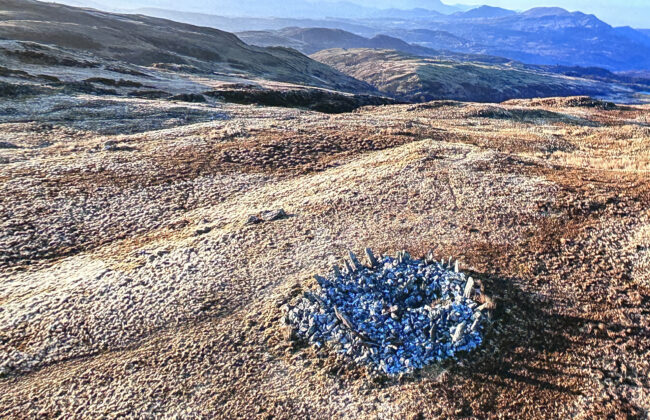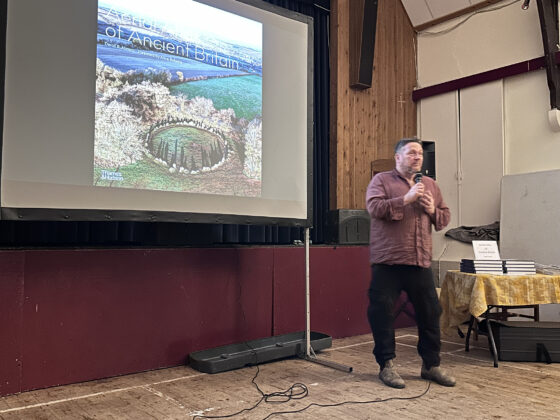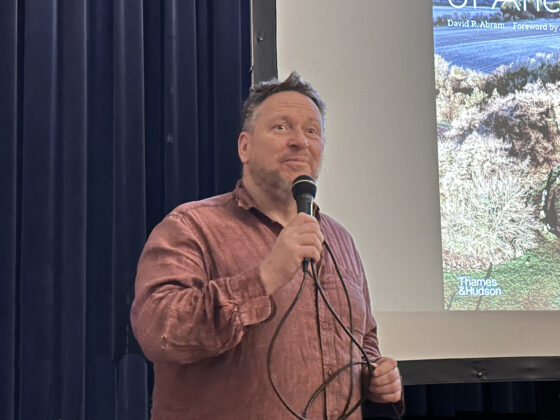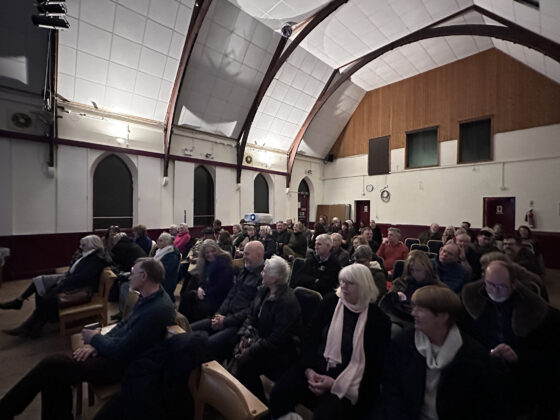David Abram entertained from the very first anecdote. The audience came from all walks of life and had been drawn to the talk for various reasons: by the photography, history and a keen interest in archaeology. David knew his stuff, even though he did joke about having to give a talk in the Duchess of Goodwood’s house one evening where there were very eminent archaeologists in the audience including Mark Roberts who had conducted the excavations at the Boxgrove Quarry.
David explained: “History in schools begins in AD 43 with the arrival of the Claudian legions but hardly ever touches on the Iron Age and its people whose lives were wiped out by the Romans. And still less is taught about the Bronze Age people who introduced metal work into these islands two and a half thousand years before that, and then only with glancing reference to the Neolithic people who built Stonehenge and Avebury.
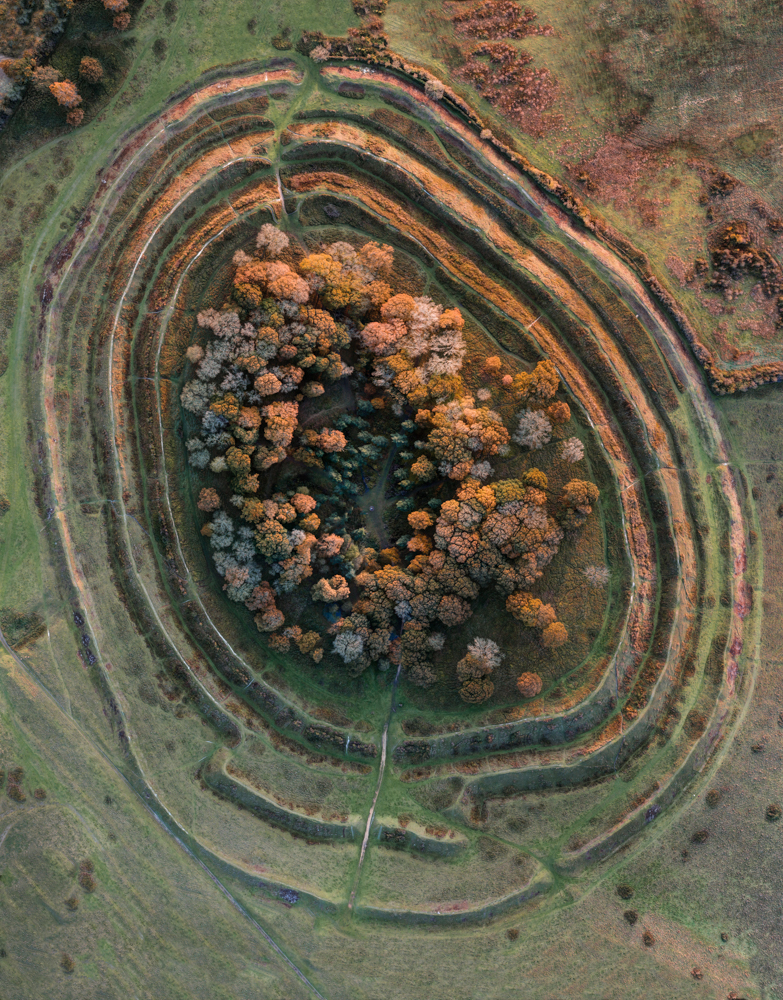
“Seven or eight years ago I was sitting on a hill just outside the town where I live, looking across the Wylye Valley outside Salisbury across to the Salisbury Plain. I could see all these lumps and bumps in the landscape: tantalising, interesting and intriguing. These marks on the landscape were very evocative to me. I couldn’t have put a date to any of them and I couldn’t have named the epochs they came from. That amazed me because I have written twenty-five travel books about other countries as a travel writer and yet I realised I knew so little.
“My background is in visual anthropology, and I didn’t know much about archaeology, so I decided sitting on that hill that I would make it my business then and there to find out as much as I could about the monuments around where I live. It turned out that I live at the epicentre of the greatest concentration of prehistoric sites anywhere in north-west Europe.
“I started mapping them and reading about them and discovered that there were far, far more than I had appreciated. I also discovered that there was a lot more known about them than I had realised but that knowledge was locked up in difficult and impenetrable academic prose.
“During lockdown I began taking drone shots of these sites and was amazed at what you could capture from above. When you put the camera at the height of a hovering kestrel you see the most breath-taking sites. It gives you the context, it gives you the form and makes it richer. From below, many sites loom up above you whereas from above they sit in the landscape and the capturing of them is quite magical, especially in the very early light of the day. I was totally hooked.
“I posted my photos on Instagram and landed a wonderful book deal. Now I spend my time giving talks about my discoveries and photos of the prehistoric sites.”
David spoke with such enthusiasm and love for his art and told the audience that light was fifty percent of the battle in getting good photographs. He loved the early morning especially and the shadows were often spectacular because they were so elongated.
The audience marvelled at his photography and at the interval there was a long queue to purchase his book Aerial Atlas of Ancient Britain (Thames and Hudson). Everyone came away having learnt so much and it was made more memorable because it was so entertaining, nothing like the dry old academic tomes David had mentioned earlier. He has made this period of history accessible to all.
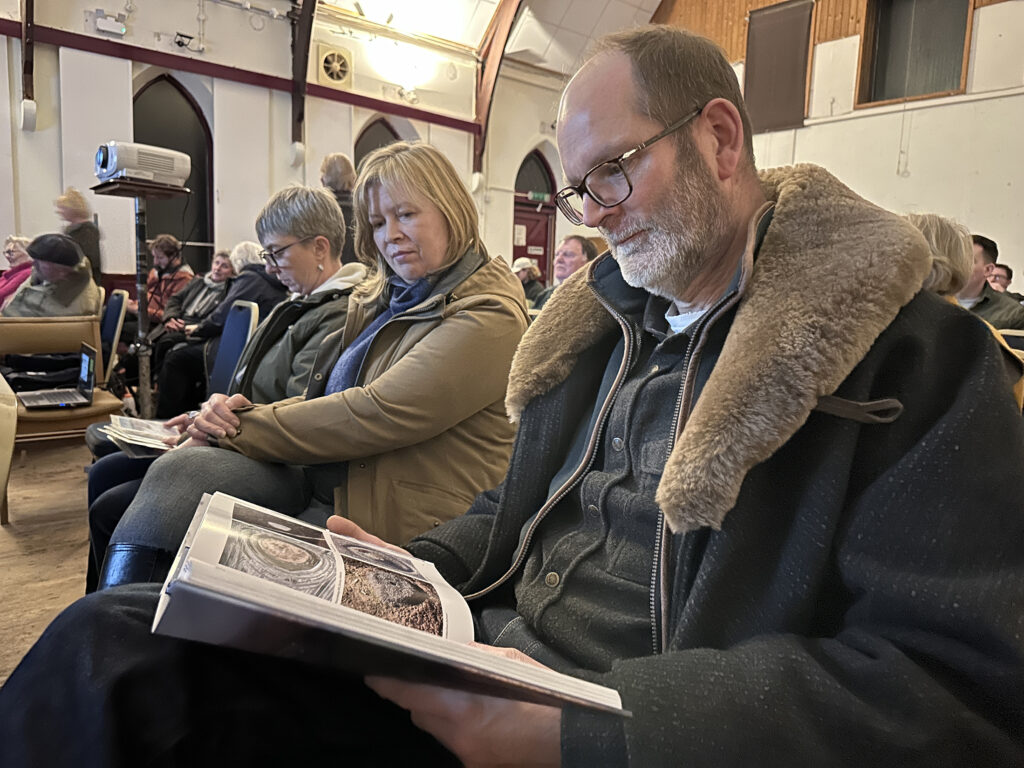
Edward Hutt was in the audience and explained why he had been drawn to this talk.
“I have been interested in prehistoric sites since childhood, when my father took us to places like Grimes Graves, where – in those days we were able to climb down into the stone age flint mines. Stonehenge and Avebury were favourites, and we always looked out for bronze age ring barrows on our trips to the West Country. So David’s photos were intriguing when they started appearing on my Instagram feed, and the beauty of the sites in the landscape appealed to the photographer in me. What a treat to have David visit our end of the country, when we could see the photos vividly projected and hear the stories behind them.”
Image Credits: David R Abrams , Kt bruce , David R Abrams .



